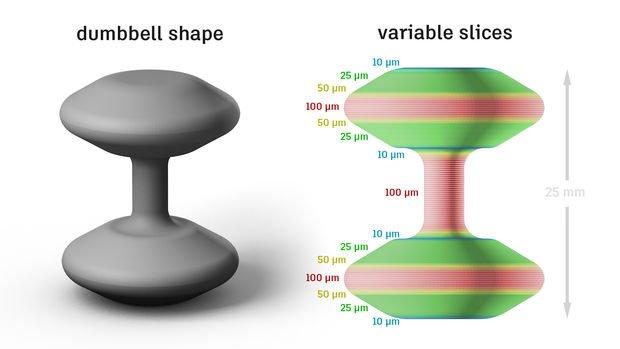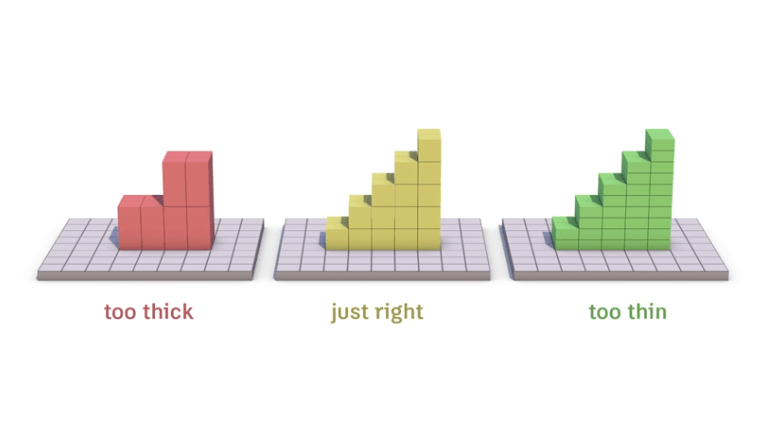 Autodesk wants you to have it all. If you’ve been 3D printing for a while, you’re probably aware that while you can achieve amazing results with 3D models, the slicing and the settings are where it’s at–along with getting some great tips from the experts! Last we checked in with Steve Kranz, we learned how to achieve sub-pixel resolution while 3D printing. Now, the Autodesk 3D printing veteran is helping us to achieve the results we want through slicing—and without waiting an eternity for high-resolution models to print.
Autodesk wants you to have it all. If you’ve been 3D printing for a while, you’re probably aware that while you can achieve amazing results with 3D models, the slicing and the settings are where it’s at–along with getting some great tips from the experts! Last we checked in with Steve Kranz, we learned how to achieve sub-pixel resolution while 3D printing. Now, the Autodesk 3D printing veteran is helping us to achieve the results we want through slicing—and without waiting an eternity for high-resolution models to print.
The question is not whether your 3D printer can print out high-resolution objects, but rather how long it will take. As Kranz points out, if you manipulate your slicing properly, you can have the best of all worlds.
“If your slices are thick, it prints fast but the individual layers are obvious,” says Kranz. “If you slice thin layers, the part looks nicer but it takes longer to print. What if you could have the best of both all in the same print?”
The new algorithm automatically slices .stl files and variable layer heights to optimize for both print speed and resolution. For any 3D printer, there is an optimum layer thickness (such as 50 microns for the Ember 3D printer). This is where striking the perfect balance for the best prints comes in. You don’t want to slice too thickly or too thin.
“Thicker slices are okay at the bottom; thinner slices are great at the top,” says Kranz.
 VariSlice is an open workflow for automatically slicing STL files at variable layer heights. With this program, Autodesk has created a way for you to print your vertical walls using the maximum layer height but with shallow angles (see the sphere example in the Instructables video below) being printed with low layer height.
VariSlice is an open workflow for automatically slicing STL files at variable layer heights. With this program, Autodesk has created a way for you to print your vertical walls using the maximum layer height but with shallow angles (see the sphere example in the Instructables video below) being printed with low layer height.
Taking each .stl file, the VariSlice program checks out the slopes of all triangles and then slices them at whatever thicknesses will allow for the best speed and resolution whether you are creating a cone, pyramid, or prism shape. The process gets more complex, however, when each of the sections of a shape (like a dome) has a different slope.
The unique algorithm, both open-source and free, offers automated slicing so that you don’t have to worry about overlapping, interleaving, or stair stepping. Speed can be varied for quality levels depending on the object and its geometry, but users will be able to look forward to printing that is up to ten times faster.
The key is that you will see mostly thicker layers, but the thinner layers are catching the ‘fine details.’ This is a great algorithm to use if you are experimenting with speed, resolution, and different results. It allows you to break the rules a little as you work to come up with the best slicing techniques for varying objects. Let us know what you come up with! Discuss in the VariSlice forum at 3DPB.com.
[Source: Hackaday]
Subscribe to Our Email Newsletter
Stay up-to-date on all the latest news from the 3D printing industry and receive information and offers from third party vendors.
Print Services
Upload your 3D Models and get them printed quickly and efficiently.
You May Also Like
3D Printing News Briefs, July 2, 2025: Copper Alloys, Defense Manufacturing, & More
We’re starting off with metals in today’s 3D Printing News Briefs, as Farsoon has unveiled a large-scale AM solution for copper alloys, and Meltio used its wire-laser metal solution to...
3DPOD 260: John Hart on VulcanForms, MIT, Desktop Metal and More
John Hart is a Professor at MIT; he´s also the director of the Laboratory for Manufacturing and Productivity as well as the director of the Center for Advanced Production Technologies....
3D Printing News Briefs, June 28, 2025: Defense Accelerator, Surgical Models, & More
In this weekend’s 3D Printing News Briefs, 3YOURMIND was selected to join an EU Defense Accelerator, and PTC has announced model-based definition (MBD) capabilities within Onshape. Finally, a study out...
EOS in India: AM’s Rising Star
EOS is doubling down on India. With a growing base of aerospace startups, new government policies, and a massive engineering workforce, India is quickly becoming one of the most important...

































